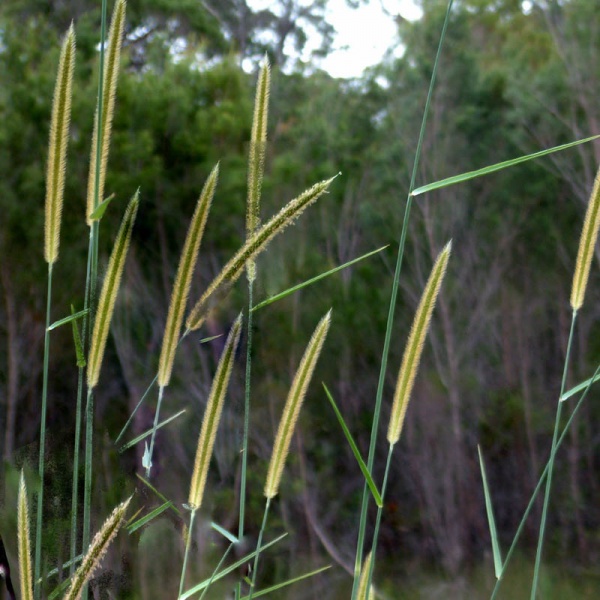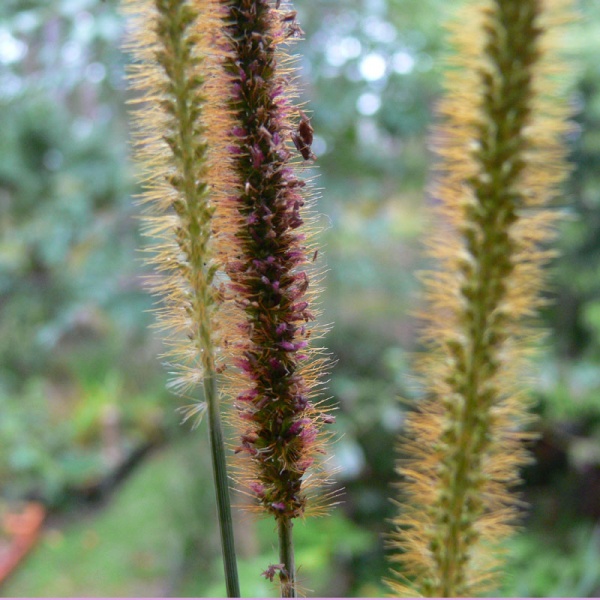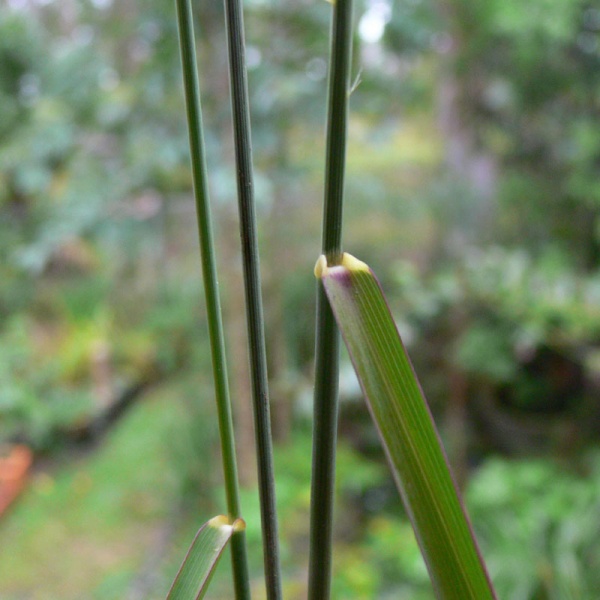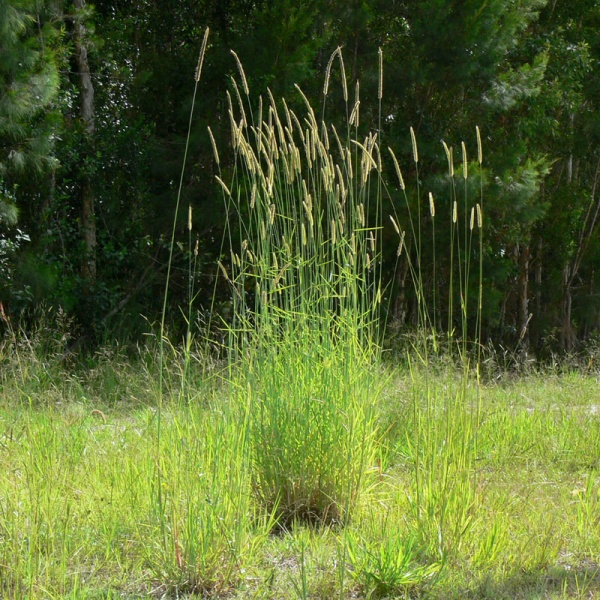Scientific Name: Setaria sphacelata
-
Pronunciation:set-TARE-ee-ah fas-ah-LAR-tah
-
Common Name:Setaria, South African Pigeon Grass




-
Derivation:Setaria: from the Latin seta (a bristle), alluding to bristly inflorescences. sphacelata: Latin for speckled with brown or black. The apices of the anthoecia are purple or black
-
Type:
-
Family:POACEAE
-
Status:WEED This introduced plant has escaped into local bushland. Without natural predators to keep it in check, it is out-competing native species.
-
Flowers:Flowering time is December to July.
-
Species List:Noosa's Worst Weeds, Emu Mt., BSDoonan, Banana, Tewantin Forest Gyndier, Grass book, Mill Point, Johns, Batianoff, Cranks Creek, NPA Botany 07, Leslie Drive Roundabout, TAFE, Heritage Park,
Cultural Notes
Setarias are native to countries throughout Africa (despite the common name we use in Australia).. Setarias are amongst the most cold-tolerant of the tropical grasses, and they do best in the higher rainfall, coastal districts of the subtropics. They compete aggressively with other weeds, and prevent the re-establishment of native sedges and rushes on fertile floodplains. They were introduced for grazing by cattle, but the high oxalate levels make it unsafe for horses and donkeys. There are two varieties in the region. S. sphacelata var. sericea (NSW WA QLD) – Culms up to 2m tall. Inflorescence 7-25cm long. Leaf blades 3-10mm wide. S. sphacelata var.splendida (QLD) – Culms up to 3m tall. Inflorescence 20-50cm long. Leaf blades 10-17mm wide.
Identification Notes
They are densely tufted, summer-growing perennial grasses. The leaves are bluish grey-green, soft and hairless, but may feel scrabrous (rough to the touch). The lower parts of the stems and basal leaf sheaths are flattened, and often red-coloured. The base of young shoots are strongly compressed into a fan shape. The old dead sheaths often remain attached to the base of the stem. The ligule is a fringe of hairs. The inflorescence is a tightly contracted panicle, producing a false spike with dense golden-yellow bristles. The seeds average about 1.5million per kilogram.
Landscaping Notes
REMOVAL: Remove every part of the plant - hand-pull seedlings. Cut, bag and dispose of seed heads. Replace with: Themeda triandra, Philydrum lanuginosum, Lomandra spp., Baumea rubiginosa.


